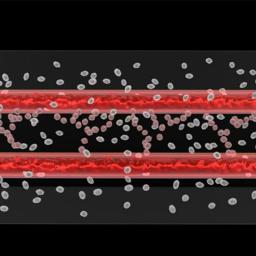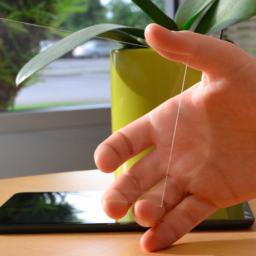
Blood vessels are vital parts of the body's circulatory system that supply the organs with nutrients and remove waste. Scientists have developed artificial tissue from the heart, liver and lungs, but creating a synthetic network of blood vessels to support these organs has been a challenge. Scientists from the Universities of Sydney, Harvard, Stanford and MIT have been working together to overcome this challenge. Now, the researchers have created 'live' artificial blood vessels in a lab using 3D-printing methods.
Right now, the actual structures don't bear much resemblance to what you'd find in a person -- you get a "spaghetti bowl" of vessels. Scientists hope to organize these vessels the way they exist in nature, though. If that happens, you could one day see artificial tissue samples and even transplants that are about as realistic as you can get.
http://www.engadget.com/2015/12/06/scientists-3d-print-live-blood-vessels/
Research has boosted solar panel efficiency over time. But some scientists argue that to truly take advantage of the sun's power, we also need to expand the amount of real estate that can be outfitted with solar, by making cells that are nearly or entirely see-through, i-e transparent cells.
A Silicon Valley start-up named "Ubiquitous Energy" has succeeded in creating such transparent solar cells. ClearView is a transparent solar cell that can coat any surface, including displays and windows, to harvest ambient light and generate electricity. Ubiquitous Energy has redesigned the solar cell to selectively transmit light visible to the human eye while absorbing only the ultraviolet and infrared light and converting it into electricity.
Read more from...
That doesn't seem to mesh with their goal of completely eliminating the need for batteries in small consumer gadgets and even smart phones, as LED lighting doesn't emit ultraviolet or infrared, and there isn't always a window nearby. Still a potentially revolutionary technology in other applications, but unfortunately it's in the very, very early stages of development.
http://www.digitaltrends.com/cool-tech/ubiquitous-energy-transparent-solar-power-timeline/ Blood vessels are vital parts of the body's circulatory system that supply the organs with nutrients and remove waste. Scientists have developed artificial tissue from the heart, liver and lungs, but creating a synthetic network of blood vessels to support these organs has been a challenge. Scientists from the Universities of Sydney, Harvard, Stanford and MIT have been working together to overcome this challenge. Now, the researchers have created 'live' artificial blood vessels in a lab using 3D-printing methods.
Blood vessels are vital parts of the body's circulatory system that supply the organs with nutrients and remove waste. Scientists have developed artificial tissue from the heart, liver and lungs, but creating a synthetic network of blood vessels to support these organs has been a challenge. Scientists from the Universities of Sydney, Harvard, Stanford and MIT have been working together to overcome this challenge. Now, the researchers have created 'live' artificial blood vessels in a lab using 3D-printing methods. 